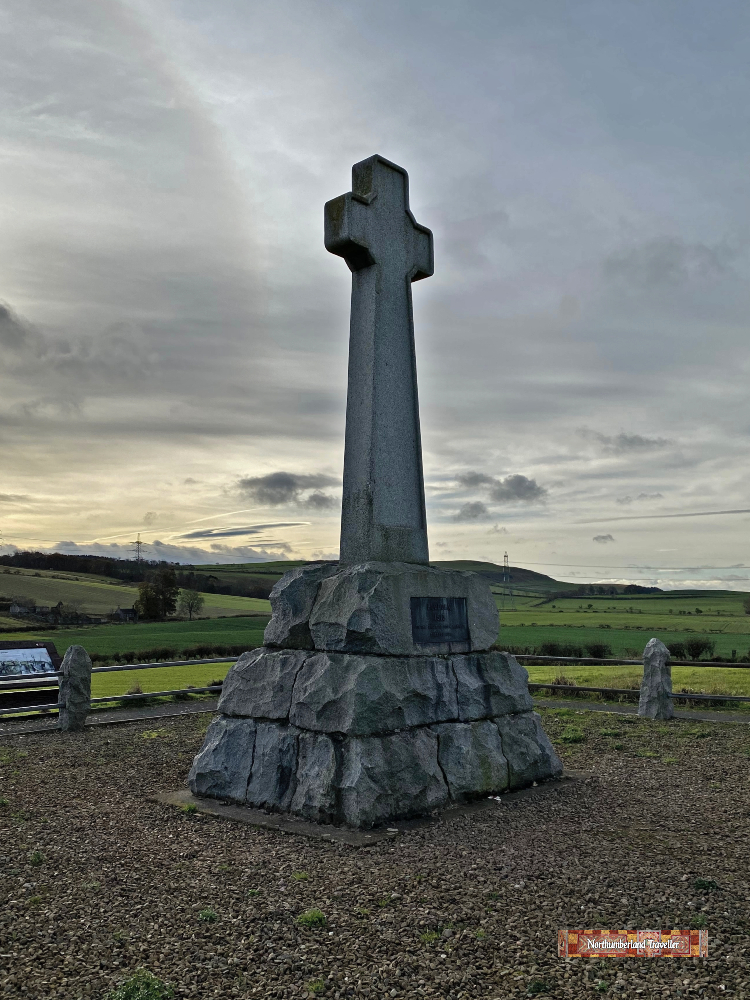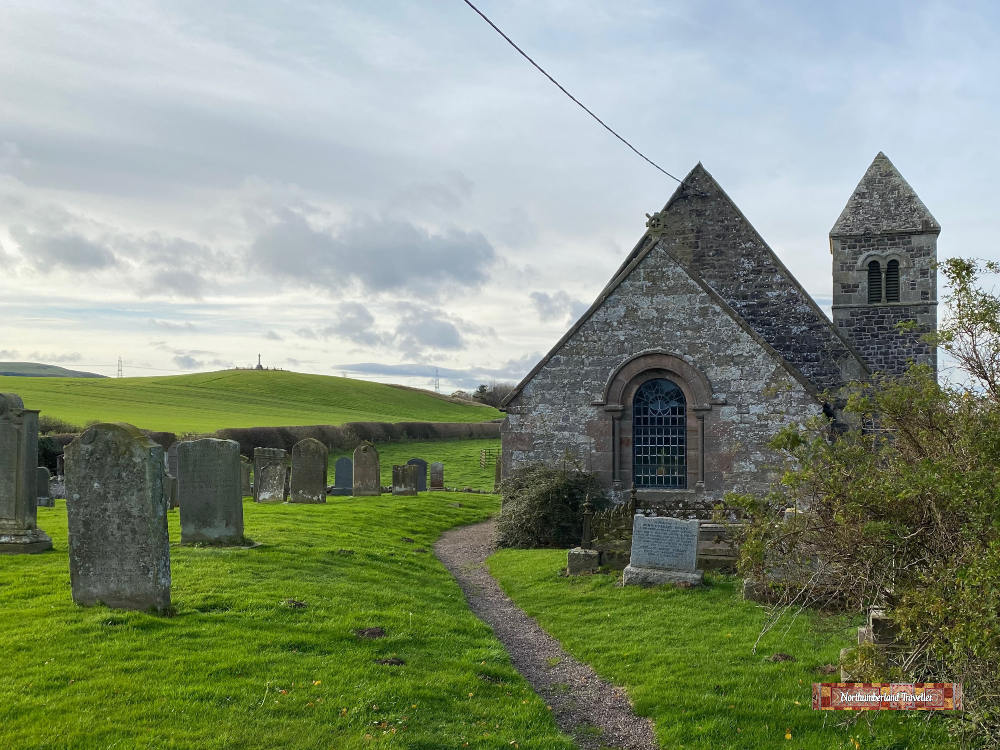
The Battle of Flodden Field took place near the village of Branxton in Northumberland on 9th September 1513. It was the largest battle ever waged between armies from England and Scotland and, after a day of mass slaughter, ended in a decisive victory for England and the death of Scottish King James IV, the last reigning monarch to die in battle.

The Flodden Monument sits on a ridge and marks the centre of English battle lines. The plaque reads To the Brave of Both Nations – Erected 1910.

A trail extends around the edge of the battlefield, from the Monument down to the mid ground which, in 1513, was an undrained boggy morass where most of the killing took place and then up to Branxton Hill where the Scottish forces were assembled at the start of the battle. All around the battlefield are information boards explaining the different stages of the battle, the tactics employed, the different weaponry and so on.

This was where the fighting took place. Branxton village is on the right and you may just be able to make out the monument cross on the left.

The course of the battle has been written about extensively and if you are interested you can read about it on the Remembering Flodden website. At the risk of over-simplification my understanding of the battle was that the Scots were brave and ardent as usual but their main weapon was an 18 foot pike which proved to be unwieldy in the boggy terrain compared to the English 8 foot billhook. Similarly the English artillery was lighter and more manoeuvrable than the Scottish heavy guns which were hard to reposition when unexpectedly outflanked by the Earl of Surrey’s army. English longbows also played a decisive role.

St. Paul’s Church in Branxton where the slain of both sides were received after the Battle of Flodden. The Flodden Monument can be seen on the hilltop behind the church. For three hundred years the engagement was known as the Battle of Branxton Moor and was only romanticised as the ‘Battle of Flodden Field’ by Victorian authors and historians during the 19th Century.

A public phone booth in Branxton village was purchased from British Telecom for £1 and repurposed into a Battle of Flodden tourist information kiosk complete with maps, brochures, a three minute recorded audio guide and a donation box. It is said to be the The World’s Smallest Visitor Centre. So while Scotland commemorates its famous victory over England at Bannockburn with a multi-million pound visitor centre, England’s equivalent fits in a phone booth.
The classic British design icon has been put to creative uses all over the world since they ceased to be used as call boxes, for example as a coffee shop, a salad bar, a micro library, an ATM booth, a colour therapy retreat, a cake shop, an art gallery, a bar, a defibrillator booth and even a beach shower. I passed one in Edinburgh recently which was being used by a street-sleeper for keeping his cardboard boxes dry during the day. And they have always been used as urinals by drunks, even when they still had phones in them!
How to Get to Flodden Field
The location is marked on this map.
Nearby Attractions
Ford & Etal
Heatherslaw Light Railway
Heatherslaw Cornmill
Hay Farm Heavy Horse Centre
Cheviot Brewery
